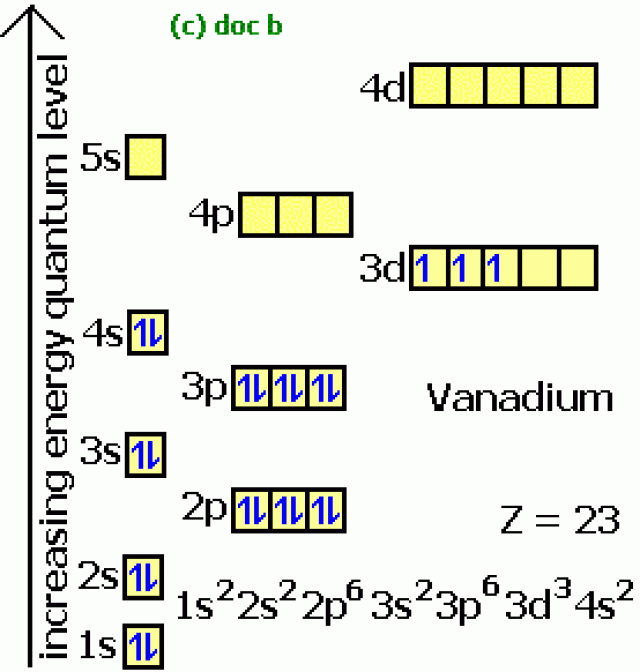Vanadium In its 1961 report, the Commission accepted Ar (V) = 50.942 based on mass-spectrometric data, and in 1969 recommended a more precise Ar (V) = 50.9414 (3). A number of determinations of the isotopic composition of vanadium have since been considered. As a result, in 1977 the Commission refined Ar (V) to 50.9415 (1). Chemical elements listed by atomic mass The elemenents of the periodic table sorted by atomic mass. Click on any element's name for further information on chemical properties, environmental data or health effects. This list contains the 118 elements of chemistry. Atomic Mass of Vanadium Atomic mass of Vanadium is 50.9415 u. An average diet provides 6 to 18 mcg of vanadium per day. The various vanadium supplements contain a different amount of vanadium, depending on the chemical compound used. For example, vanadyl sulfate contains 31% elemental vanadium; sodium metavanadate contains 42% elemental vanadium; and sodium orthovanadate contains 28% elemental vanadium.
Atomic Mass and Nuclear Binding Energy for V-52 (Vanadium)
Abstract
Vanadium Atomic Mass Unit
This document is part of the Supplement containing the complete sets of data of Subvolume A `Nuclei with Z = 1 - 54' of Volume 22 `Nuclear Binding Energies and Atomic Masses' of Landolt-Börnstein - Group I `Elementary Particles, Nuclei and Atoms'. It provides atomic mass, mass excess, nuclear binding energy, nucleon separation energies, Q-values, and nucleon residual interaction parameters for atomic nuclei of the isotope V-52 (Vanadium, atomic number Z = 23, mass number A = 52).

- atomic mass;
- mass excess;
- nuclear binding energy;
- nucleon separation energy;
- Q-value;
- nucleon residual interaction parameter
Molar mass of V = 50.9415 g/mol
Convert grams Vanadium to moles or moles Vanadium to grams
| Symbol | # of Atoms | Vanadium | V | 50.9415 | 1 | 100.000% |
In chemistry, the formula weight is a quantity computed by multiplying the atomic weight (in atomic mass units) of each element in a chemical formula by the number of atoms of that element present in the formula, then adding all of these products together.
If the formula used in calculating molar mass is the molecular formula, the formula weight computed is the molecular weight. The percentage by weight of any atom or group of atoms in a compound can be computed by dividing the total weight of the atom (or group of atoms) in the formula by the formula weight and multiplying by 100.
Using the chemical formula of the compound and the periodic table of elements, we can add up the atomic weights and calculate molecular weight of the substance.
A common request on this site is to convert grams to moles. To complete this calculation, you have to know what substance you are trying to convert. The reason is that the molar mass of the substance affects the conversion. This site explains how to find molar mass.
The atomic weights used on this site come from NIST, the National Institute of Standards and Technology. We use the most common isotopes. This is how to calculate molar mass (average molecular weight), which is based on isotropically weighted averages. This is not the same as molecular mass, which is the mass of a single molecule of well-defined isotopes. For bulk stoichiometric calculations, we are usually determining molar mass, which may also be called standard atomic weight or average atomic mass.
Finding molar mass starts with units of grams per mole (g/mol). When calculating molecular weight of a chemical compound, it tells us how many grams are in one mole of that substance. The formula weight is simply the weight in atomic mass units of all the atoms in a given formula.
Vanadium Number
Formula weights are especially useful in determining the relative weights of reagents and products in a chemical reaction. These relative weights computed from the chemical equation are sometimes called equation weights.
